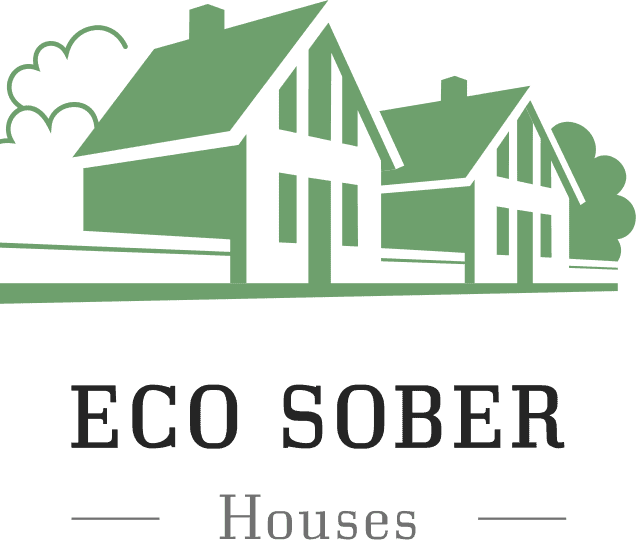Contents:
Enhanced voluntary alcohol drinking in dependent mice produced brain alcohol concentrations similar to those achieved during the chronic alcohol exposure that initially rendered the animals dependent. Samples were collected from the nucleus accumbens of alcohol-dependent mice that had undergone three cycles of chronic intermittent alcohol vapor exposure and nondependent controls . Samples were taken before, during, and after the 2-hour drinking session, when the mice had the opportunity to voluntarily drink alcohol (15 percent vol/vol) or water. Alcohol intake during the drinking session was 3.04 ± 0.15 g/kg for dependent mice and 2.32 ± 0.28 g/kg for nondependent mice. Horizontal lines and shaded area represent brain alcohol levels (means ± SEM) measured in the dependent mice during chronic intermittent alcohol exposure (28.4 ± 3.5 mM).
Inform any counselors or therapists of the person’s relapse, with or without a signed release of information. Remove the person, if possible, from their current environment and away from any substances. The Dan Anderson Renewal Center is the place where we can retreat from the world momentarily, immerse ourselves in Twelve Step insights, and emerge with a stronger recovery, a gentle resolve and a keen understanding of life. Include the names of everyone on your medical and support teams and how to contact them.

He went through an alcohol detox program, attended Alcoholics Anonymous meetings, and tried using willpower to stop himself from binge drinking. But this past winter, with the stress of the pandemic increasingly weighing on him, he found himself craving beer every morning, drinking in his car and polishing off two liters of Scotch a week. Discover how many people with alcohol use disorder in the United States receive treatment across age groups and demographics. BetterHelp can connect you to an addiction and mental health counselor. Some treatment medications and mobile applications are used to help the brain adapt gradually to the absence of the drug.
Although currently few treatments are available for tackling this significant health problem and providing relief for those suffering from the disease, there is hope. This latter finding suggests that elevated alcohol self-administration does not merely result from long-term alcohol exposure per se, but rather that repeated withdrawal experiences underlie enhanced motivation for alcohol seeking/consumption. This effect apparently was specific to alcohol because repeated chronic alcohol exposure and withdrawal experience did not produce alterations in the animals’ consumption of a sugar solution .
Moreover, after receiving some of these medications, animals exhibited lower relapse vulnerability and/or a reduced amount consumed once drinking was -initiated (Ciccocioppo et al. 2003; Finn et al. 2007; Funk et al. 2007; Walker and Koob 2008). These findings have clear clinical relevance from a treatment perspective. Indeed, clinical investigations similarly have reported that a history of multiple detoxifications can impact responsiveness to and efficacy of various pharmacotherapeutics used to manage alcohol dependence (Malcolm et al. 2000, 2002, 2007). Future studies should focus on elucidating neural mechanisms underlying sensitization of symptoms that contribute to a negative emotional state resulting from repeated withdrawal experience. Such studies will undoubtedly reveal important insights that spark development of new and more effective treatment strategies for relapse prevention as well as aid people in controlling alcohol consumption that too often spirals out of control to excessive levels. Alcohol dependence is thought to represent a persistent dysfunctional (i.e., allostatic) state in which the organism is ill-equipped to exert appropriate behavioral control over alcohol drinking.
Recommended Alcohol Rehabilitation-Related Articles
Of course, not all detox and treatment are created equal, but these numbers are consistent with other common chronic diseases. Alcoholism is a chronic disease that takes months or years of treatment and support to recover from. It choices sober living takes years to conduct studies on people recovering from alcoholism. That’s why 2017 and 2018 alcohol relapse statistics aren’t available yet. However, studies published in recent years provide a picture of current relapse rates.

With further treatment and dedication, you can maintain sobriety. When physical relapse happens, people in recovery from liver damage risk a recurrence of alcohol-related liver disease. Slips can cause a transition from an emotional relapse to a mental relapse or from a mental relapse to a physical relapse. When someone in recovery slips by consuming any amount of alcohol, the brain can revert back to how it functioned when the person was abusing alcohol. It’s sometimes the last obstacle to overcome on the path to alcohol recovery. They either relapse or seek further therapy to prevent future slips.
Together with a licensed professional, you will develop a treatment plan that is individualized to your needs and is monitored throughout your time in treatment. A 2010 study investigated a 10-year comparison of public endorsement of treatment and prejudice of the diagnoses of schizophrenia, depression, and alcohol dependence. Regarding alcohol dependence, high proportions of respondents in this study endorsed treatment, with general increases in the proportion https://rehabliving.net/ endorsing treatment from doctors and specific increases in the proportions endorsing treatment from psychiatrists (from 61% in 1996 to 79% in 2006). This study found that more of the public embraces a neurobiological understanding of mental illness, which translates into support for services but not necessarily into a decrease in stigma. Patients should spend time thinking about circumstances during which they feel at highest risk for relapse.
In colleges, it’s viewed as a badge of honor to be able to drink more than your peers. Emotional relapseis characterized by suppressing emotions, becoming more isolated, missing meetings, blaming others and developing poor recovery habits. Learn more abouthow our program worksorschedule a callwith a member of the Ria Health team. Yet for a variety of reasons, people who need treatment rarely get it from their physicians. Learn more about the financial impact of alcohol misuse in the United States.
Alcohol Relapse: Rates & Statistics
That perception is driven by the ubiquity and long history of 12-step programs like A.A. For some people with severe drinking problems, that may be necessary. But studies show that people who have milder forms of alcohol use disorder can improve their mental health and quality of life, as well as their blood pressure, liver health and other aspects of their physical health, by lowering their alcohol intake without quitting alcohol entirely. Yet the idea that the only option is to quit cold turkey can prevent people from seeking treatment.

Ultimately, relapse is a part of many people’s story, and it doesn’t prevent anyone from finding long-term sobriety. But staying watchful for a potential relapse is vital because it comes with the inherent risk of overdose or even death, and a person who experiences relapse should consider their treatment options carefully to give themselves the best chance at re-entering recovery. Some research has found that 40% to 60% of people dealing with substance abuse disorders relapse within a year. In fact, experts consider relapses part of the recovery process. Returning to the statistic that says people who get treatment for substance abuse relapse at a rate of 40% to 60%, this seems very high on its face, but less so when compared to other chronic diseases. Alcoholics, more than addicts to other substances, often try to get sober without professional treatment from a dedicated facility, whether inpatient or outpatient.
Support for Me and My Family
In earlier analyses based on this sample, we identified 1-year risk factors for overall 8-year non-remission . Here, we focus separately on groups of individuals who achieved 3-year remission with or without help and, among these remitted individuals, examine overall predictors of 16-year relapse and potential differential predictors in the two groups. When comparing an opioid relapse with other drug relapses and overdoses, it’s important to understand a few things.
- Many people kick their heavy drinking habit on their own or through self-help programs like Alcoholics Anonymous or SMART Recovery.
- Since he started using it, Mr. Mathisen has reduced his drinking substantially, limiting himself to just one or two drinks a couple days a week.
- Something like a stressful job or rejoining a social circle that’s not respectful of your sobriety can make it more difficult to resist having a drink, especially when you’re not used to a sober routine.
- Patients are also taught the disease model of addiction, which states that addiction is both chronic and progressive.
They should anticipate these situations and make a written list. Most persons with alcoholism can quickly list the circumstances and/or emotions that led them to drink. The key step for the patient is to realize that treatment does not end with sobriety. Recovery means that patients can handle the stresses of everyday life without alcohol. Therefore, the patient must develop and rehearse strategies to cope with high-risk situations.
Think about things that led to or worsened this relapse and how to remove them from your life. If a trigger is unavoidable, consider what you can do differently next time you face it. Feelings of stress, anger, sadness, hopelessness, or even boredom can set off a relapse. This is especially true when your emotions stem from conflicts with loved ones. But even positive emotions can be a trigger if you celebrate them with alcohol.
Excessive drinking has numerous impacts on your body and mind, ranging from mild to severe. Learn which signs to look out for, and how to care for your well-being. Explore how many people ages 18 to 25 engage in alcohol misuse in the United States and the impact it has. Learn how many people ages 12 to 20 engage in underage alcohol misuse in the United States and the impact it has. You can use sobriety savings to pay off debts, save for retirement, or invest in a healthier lifestyle. For those with addiction to harder drugs such as cocaine, opiates, and methamphetamines, it can mean saving thousands of dollars a year.
AA Success Rates and Statistics
Yates WR, Booth BM, Reed DA, Brown K, Masterson BJ. Descriptive and predictive validity of a high-risk alcoholism relapse model. Tucker JA, Vuchinich RE, Gladsjo JA. Environmental events surrounding natural recovery from alcohol-related problems. Ornstein P, Cherepon JA. Demographic variables as predictors of alcoholism treatment outcome. Jin H, Rourke SB, Patterson TL, Taylor MJ, Grant I. Predictors of relapse in long-term abstinent alcoholics. In earlier analyses based on this sample, we identified baseline predictors of overall 1-year non-remission .
Predictors of short-term remission
One, because with something like ongoing outpatient therapy or a 12-step group, people in treatment start to lose the vigilance and perspective that help them stay sober in the face of their triggers. Something like a stressful job or rejoining a social circle that’s not respectful of your sobriety can make it more difficult to resist having a drink, especially when you’re not used to a sober routine. In treatment, there’s a heavy focus on trigger handling and developing coping mechanisms when triggers are unavoidable.
Withdrawal is the earliest phase of recovery, when the body is initially exposed to the absence of alcohol in the system. For many users, this is one of the most difficult times to avoid relapse. eco sober house price The first two stages represent a progression away from recovery and toward a full relapse. For people who have established a sustained period of sobriety, relapse doesn’t occur overnight.
Calls to any general helpline (non-facility specific 1-8XX numbers) for your visit will be answered by American Addiction Centers . Twenty to 25% of people who didn’t attend AA meetings stayed sober after a year. But, almost twice as many stopped abusing substances after attending AA meetings or a similar program.
The longer an alcoholic stays sober, the better their chances are for long-term sobriety. Overall, among people sober for five years, the chances of relapsing are less than 15%, according to Psychology Today. Medically Reviewed By Angela Phillips, PhD, MSWA licensed behavioral health or medical professional on The Recovery Village Editorial Team has analyzed and confirmed every statistic, study and medical claim on this page. Consider stepping up your level of treatment, e.g., individual/group therapy to an intensive outpatient treatment program. Develop a plan with your support network, which may include re-entering a substance use treatment program, attending Alcoholics Anonymous meetings, etc.
Rehearse what to do in high-risk situations, including making use of the patient’s social support system. Patients need to identify specific responses to each of these high-risk situations. Encourage patients to be very specific when considering their responses. For example, ask patients exactly what they are going to say and do when asked at parties what they want to drink. Once patients have made the list, they should practice responses to their high-risk situations. Handle heavy-drinking friends who will try to undermine the patient’s sobriety.
There are a few publications, including Psychology Today, working to change the perception of relapse within the addiction treatment community and society as a whole, convincing people thatrelapse doesn’t equate to failure. The addiction treatment community as a whole will benefit from the understanding that no matter the quality of care that a given facility can offer patients struggling with alcohol use disorders, relapse is inevitable. In a separate 2014 study published in Drug and Alcohol Dependence, researchers reported relapse rates of 506 people who had maintained recovery from alcohol use disorder for one year.



